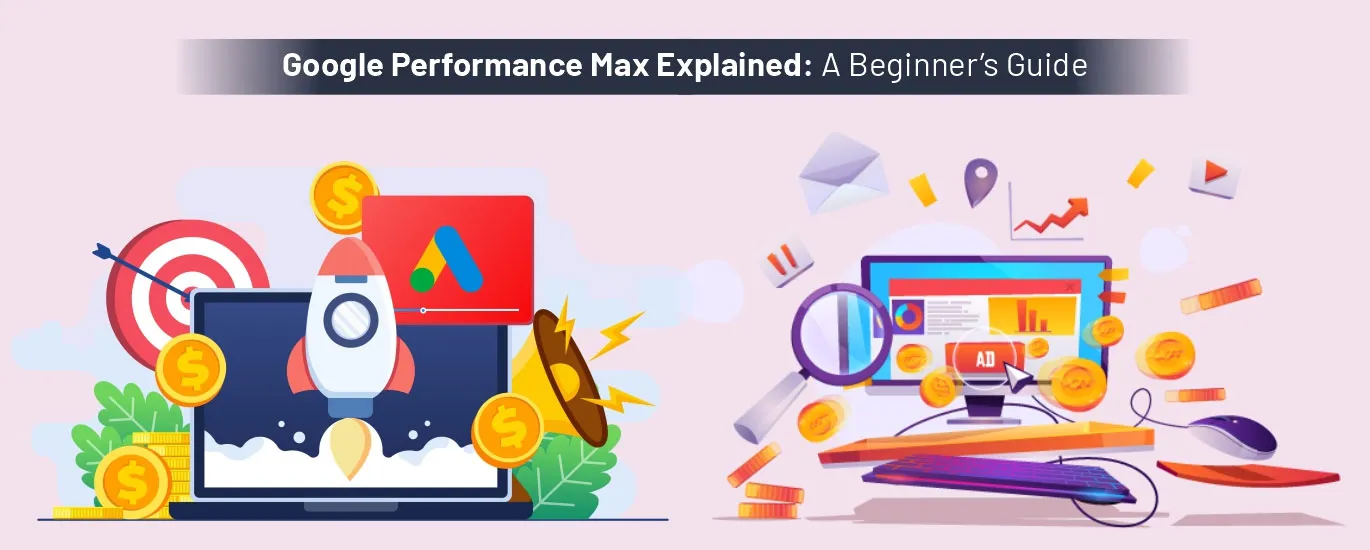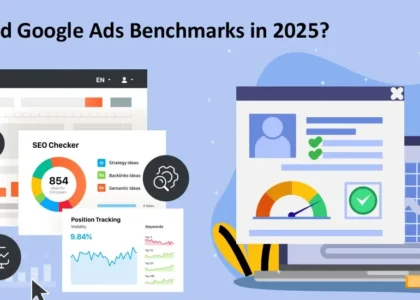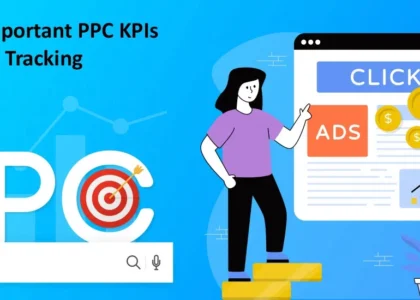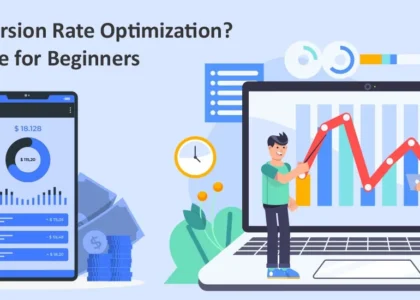If you’re new to Google Ads or just starting to explore Google Performance Max, you might feel overwhelmed. Don’t worry this blog is built exactly for beginners like you. By the end, you’ll know what Google Performance Max is, how it works, how to set it up, and why it can be a powerful tool in your digital advertising toolbox.
Let’s simplify it all.
What is Google Performance Max?
Google Performance Max (often called Performance Max or PMax) is a goal-based campaign type in Google Ads. It allows advertisers to access all of Google’s inventory Search, Display, YouTube, Gmail, Discover, and Maps from a single campaign.
Think of it like this: instead of creating separate campaigns for Search, Display, and YouTube, Performance Max combines everything into one powerful campaign that automatically chooses where to show your ads for the best results.
Why Did Google Launch Performance Max?
Traditional Google campaigns (like Search or Display) require manual setup, separate targeting, and more time to manage.
Performance Max simplifies everything. It’s powered by Google’s AI and automation to help you:
- Get more conversions
- Show ads across multiple channels
- Let Google’s machine learning optimize in real time
This campaign is ideal for:
- Small businesses with limited time or expertise
- Advertisers who want maximum reach and performance
- E-commerce stores, service providers, and lead generators
How Does Google Performance Max Work?
Here’s a simplified breakdown of how Google Performance Max campaigns work:
1. You Provide the Assets
You give Google:
- Headlines
- Descriptions
- Images
- Videos (optional, but recommended)
- Logos
- Product feed (for e-commerce)
These are called creative assets.
2. Google’s AI Builds Ads Automatically
Google’s system mixes and matches your assets to create ads in multiple formats responsive search ads, image banners, shopping ads, video ads, etc.
The AI tests which combinations perform best and keeps improving over time.
3. Your Ads Appear Across All Google Networks
One single Performance Max campaign runs ads on:
- Google Search
- YouTube
- Google Display Network
- Discover Feed
- Gmail
- Google Maps
Example: A shoe brand using Performance Max might have its ads shown to one user as a YouTube video, and to another as a shopping ad in Google Search all managed under one campaign.
4. Google Optimizes for Your Goals
You set a conversion goal (like purchases, leads, phone calls, etc.). Google’s machine learning will:
- Target the right users
- Choose the best placements
- Adjust bids in real time
This means your ad budget goes where it performs best, no manual tweaking needed.
Key Features of Google Performance Max
Here are some standout features you should know:
Automation: Bidding, targeting, and creatives are automated.
Audience Signals: You can guide the algorithm by providing your ideal customer profile.
Data-Driven Attribution: Google uses advanced models to understand what really drives conversions.
Real-Time Optimization: Google adjusts your campaign constantly to get better results.
Insights and Reporting: See which creative combinations or audience segments are performing well.
How to Set Up a Google Performance Max Campaign
Setting up your first Google Performance Max campaign is easier than you think.
Step-by-Step Guide:
Step 1: Log into Google Ads
Go to https://ads.google.com and click on New Campaign.
Step 2: Choose Your Goal
Select a goal like:
- Sales
- Leads
- Website traffic
Step 3: Choose Campaign Type
Select Performance Max as your campaign type.
Step 4: Set Budget and Bidding Strategy
Choose how much you want to spend and whether you want to:
- Maximize conversions
- Maximize conversion value
- Use target CPA or ROAS (for advanced users)
Step 5: Add Location, Language, and Conversions
Choose where your ads should appear (country, city, etc.) and link your conversion goals (like a contact form submission or product purchase).
Step 6: Add Creative Assets
Upload:
- Headlines (30 characters)
- Descriptions (90 characters)
- Images (high-quality visuals)
- Logo
- Video (recommended)
Step 7: Add Audience Signals (Optional)
This helps Google find your ideal customers faster. You can include:
- Website visitors
- Custom audiences
- Similar audiences
Step 8: Launch Your Campaign
Review everything and hit Publish.
Pro Tip: Keep an eye on your asset performance and update low-performing creatives every few weeks.
Real-Life Analogy: Think of PMax as a Smart Salesperson
Imagine you own a store and you hire a super-intelligent salesperson who:
- Knows every product
- Understands every type of customer
- Can speak every language
- Can appear in multiple places at once
- Learns fast and keeps improving daily
That’s what Google Performance Max does for your business online.
Pros and Cons of Google Performance Max
Here’s an honest look at the advantages and limitations:
Pros:
- Easy to set up
- Wide reach across all Google platforms
- Uses AI to improve performance
- Great for lead generation and sales
- Time-saving for small businesses
Cons:
- Limited visibility into individual placements
- Less control compared to traditional campaigns
- Performance may vary based on asset quality
- Requires patience results improve over time
Final Thoughts
Google Performance Max is a powerful, beginner-friendly campaign type that unlocks the full potential of Google Ads powered by automation, data, and machine learning.
For businesses that want better results with less effort, it’s the next evolution of smart advertising.
Ready to Launch High-Converting Performance Max Campaigns?
At Arrowpace, we specialize in PPC management that drives real business growth. Whether you’re just getting started or want to supercharge existing campaigns, our team can help you make the most of Google Performance Max.
Let’s build campaigns that actually perform.
Contact Arrowpace today for expert help with Performance Max and other Google Ads solutions.
FAQs About Google Performance Max
Q1. Is Google Performance Max good for small businesses?
Yes, it simplifies advertising and helps small businesses compete without needing deep PPC expertise.
Q2. Can I control where my ads show?
Not directly. You can’t select placements, but you can use audience signals to guide targeting.
Q3. Do I need a product feed to run a PMax campaign?
Only for e-commerce. If you sell products online, connect your Google Merchant Center. For service businesses, it’s not required.
Q4. How long before I see results?
Typically, it takes 2–4 weeks for the campaign to “learn” and start optimizing effectively.
Q5. Should I still use Search or Display campaigns?
Yes. Performance Max works best when used alongside other campaigns as part of a broader strategy.





